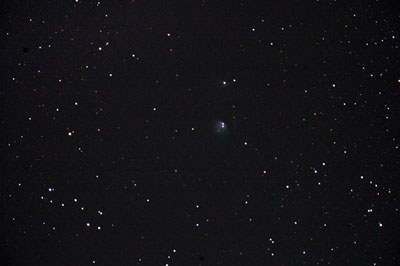
Reflection nebulae are also called diffuse nebulae, just like emission nebulae. But in contrast to these they do not emit light themselves, instead they only reflect the light of nearby stars. Therefore, they are very small and can be seen only in the immediate vicinity of bright stars, by which they can easily be outshined. There are only a few reflection nebulae that are visible in binoculars as most are simply too small.
In order to observe them successfully, you will definitely need clean optics, because otherwise you will see fog around every bright star. A slightly higher magnification is also useful, as it increases the contrast, especially in areas with much light pollution. Because these nebulae reflect the light from stars that shine in all colors of the spectrum, there are no special filters that make them easier to see – sometimes general filters that reduce the light of the street lamps may help a little. However, these filters can only be used in some very expensive binoculars. The best known reflection nebulae are M 78 in Orion and the dust surrounding the stars of the Pleiades.
